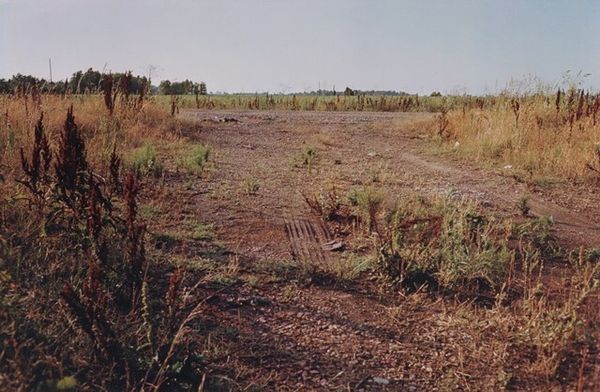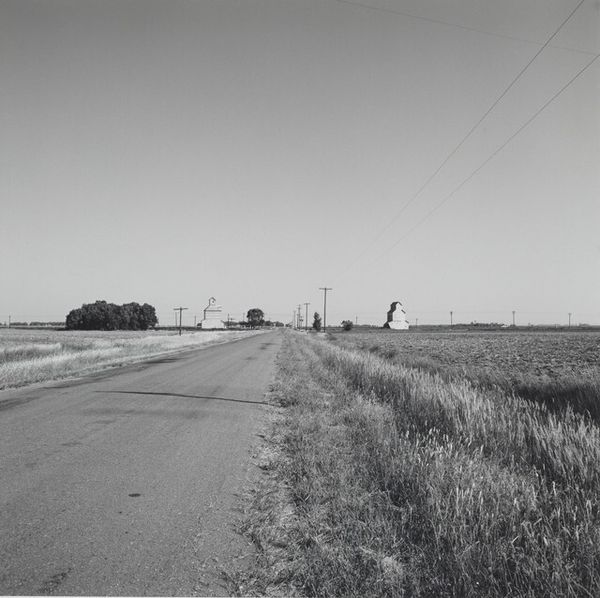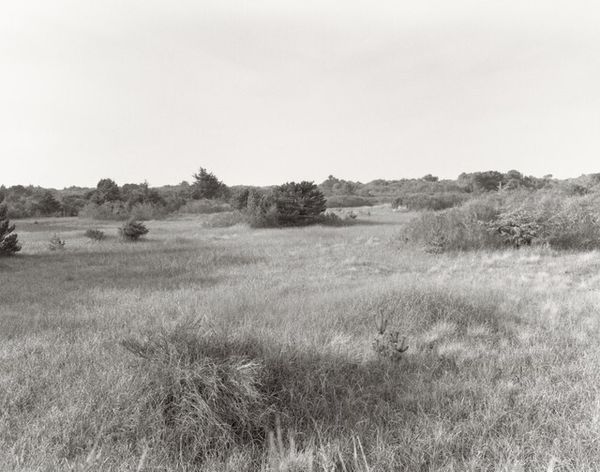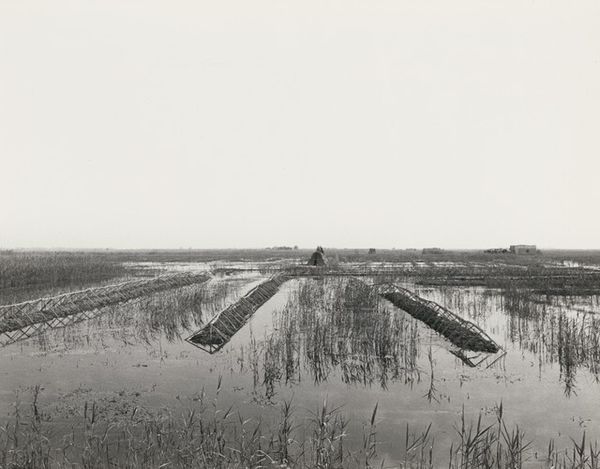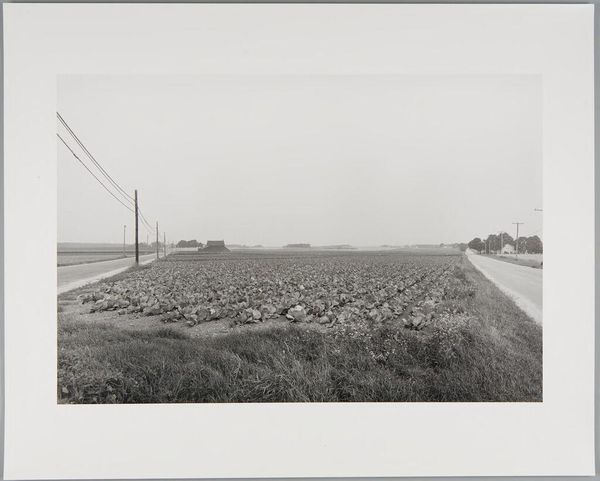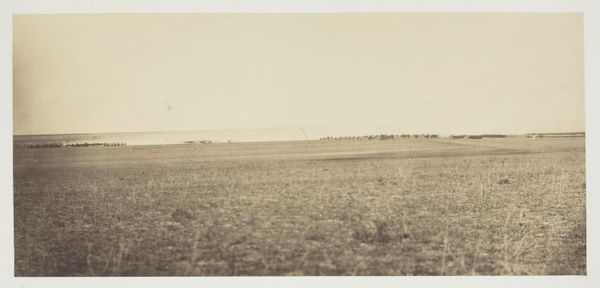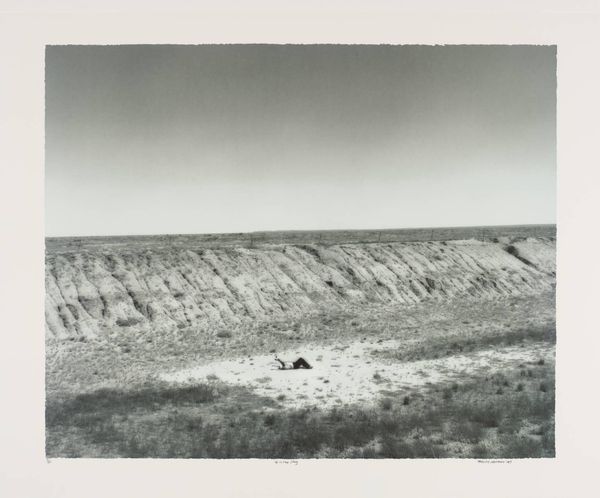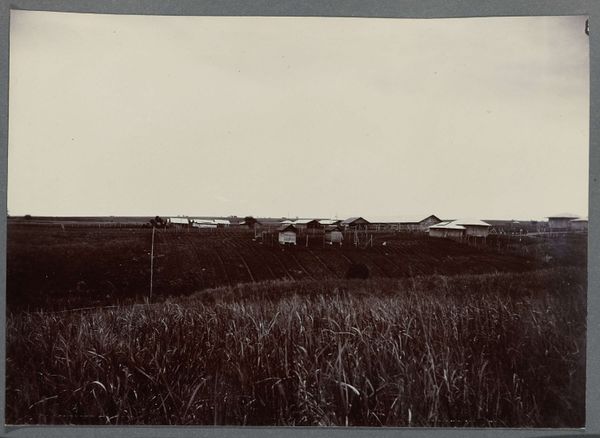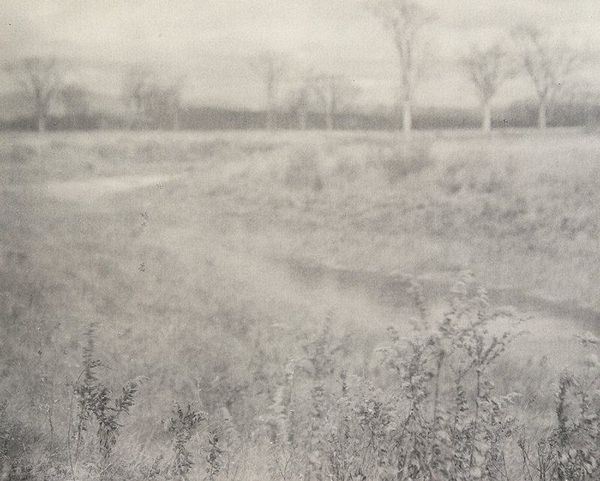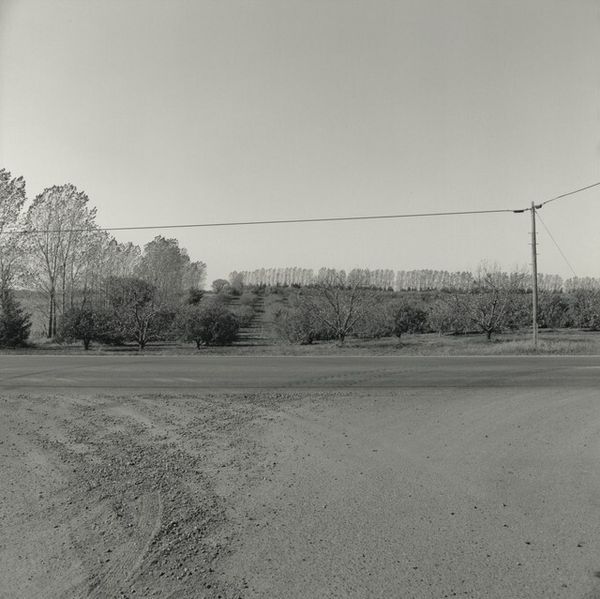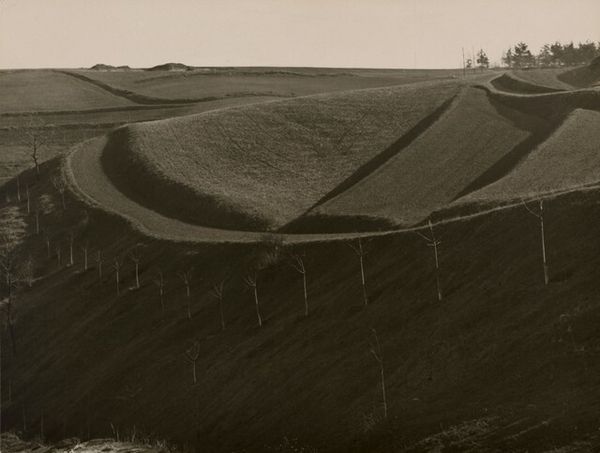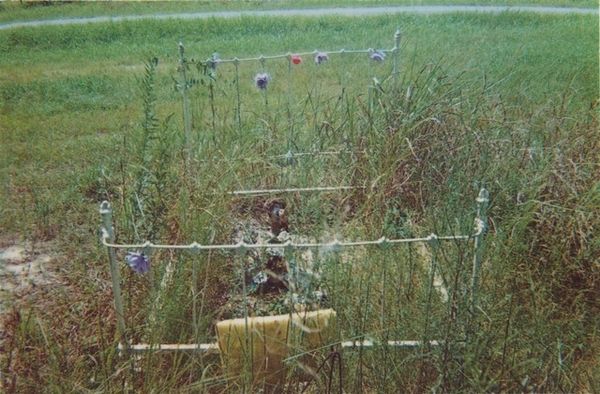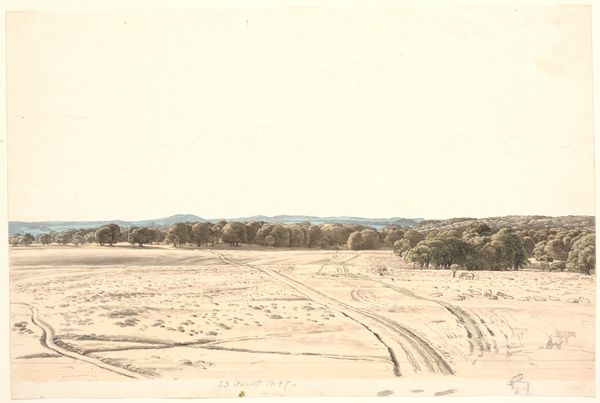
plein-air, photography
#
scenic
#
drone photography
#
countryside
#
plein-air
#
landscape
#
outdoor photography
#
photography
#
outdoor scenery
#
scenic photography
#
landscape photography
#
sky photography
#
coastline landscape
#
scenic spot
#
realism
Dimensions: image: 18.4 x 28 cm (7 1/4 x 11 in.) sheet: 27.8 x 36 cm (10 15/16 x 14 3/16 in.)
Copyright: National Gallery of Art: CC0 1.0
Editor: Here we have William Eggleston’s photograph, "Almost at the Mississippi River, Dyersburg, Tennessee" from 1984. I'm immediately struck by the contrast between the vibrant yellow field and the stark telephone pole; it almost feels like a deliberate interruption of an otherwise peaceful scene. What do you see in this piece from a formal perspective? Curator: The beauty resides precisely in that disruption. Observe how Eggleston orchestrates a delicate balance: the expansive horizontal of the field meets the rigid vertical of the pole. Consider the way the composition emphasizes flatness. There is a conscious negation of depth through tonal consistency and calculated placement of elements within the photographic frame. It is as though Eggleston intends to reveal the artifice inherent to picture making. Editor: So, the telephone pole isn't just a random object, but a key part of the structure? It’s hard to miss the verticality imposed within a photograph almost entirely composed of horizontals. Curator: Indeed. Its starkness emphasizes the field's texture, which has a painterly quality despite the photograph's apparent realism. What appears ‘real’ only reinforces how this artful organization directs our visual path. Consider Eggleston's work with dye transfer printing to fully appreciate the color’s role in directing us toward and across the composition. How does that influence your sense of it? Editor: It’s more intentional than I initially perceived. The tension, rather than being a flaw, becomes a crucial element of the photograph’s structure and meaning, it guides you in unexpected ways through the planes depicted. Curator: Precisely. Hopefully, our exploration revealed nuances you may not have noted alone, appreciating the dynamic conversation among its pictorial parts and encouraging greater sensitivity toward all formal relationships when viewing art. Editor: Absolutely, thank you, seeing how these parts create something so complex is rewarding and informs future approaches towards photographic analysis.
Comments
No comments
Be the first to comment and join the conversation on the ultimate creative platform.
